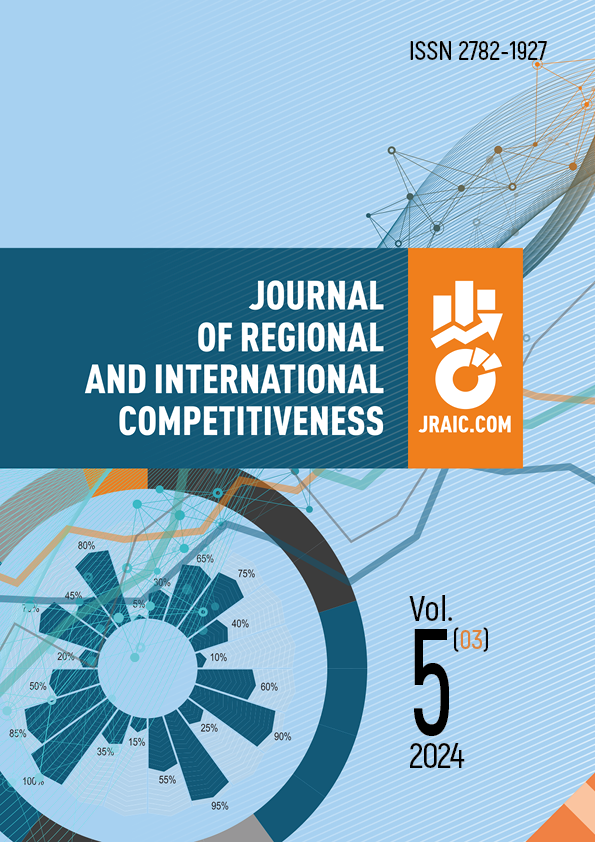Kursk, Kursk, Russian Federation
The Russian economy faced serious problems: a shortage of labour; economic sanctions, and high depreciation of fixed capital. The economic policy of the Russian authorities is inconsistent. It includes the desire to increase investments in fixed capital is accompanied by their artificial restraint through monetary and financial policies. Indeed, the scientific literature makes various proposals for economic policy changes. However, we believe the insufficient attention is paid to the objective possibilities of accelerating the renewal of fixed capital. The purpose of the study is to determine the growth opportunities of the Russian economy in 2024-2030 on the basis of accelerating fixed capital renovation. We used methods of mathematical statistics and simulation modelling. Information research base: official statistics. We constructed two objectively possible trajectories of the Russian economy development for 2023-2030 have been constructed in terms of accelerating fixed capital renovation. According to the research, the trajectory with a higher rate of capital renewal provides a significant acceleration of economic development and significantly reduces the country’s dependence on equipment imports and exports of raw materials, even with a reduction in the total number of employees. To realize the potential of economic growth, changes in property relations, effective management system are necessary; their essence is in the formation of national economic planning through indicative planning, foreign trade, currency regulation, and nationalisation of management.
economic growth potential; simulation model of the economy; renewal of fixed assets; growth trajectory; state economic policy; state planning
1. Giraev, V. K. (2024). The impact of taxes on profit formation. Retrieved from https://cyberleninka.ru/article/n/vliyanie-nalogov-na-mehanizm-formirovaniya-pribyli (accessed 20.07.2024) (in Russian).
2. Mayevsky, V. I., Malkov, S. Yu., & Rubinstein, A. A. (2023). Macroeconomic conditions of Russia’s transition to high growth rates: China’s experience. Voprosy Ekonomiki, (10), 98-123 (in Russian).
3. Moskovtseva, L.V., Kisova, A.E., & Mitrofanova, O.N. (2022). The role of foreign investments in the sustainable development of the Russian economy. Ekonomika, predprinimatel'stvo i pravo, 12(10), 2795-2806 (in Russian).
4. Kulakova, E. R. (2021). The need to attract foreign investments to the Russian Federation regions. Innovations, Science, education, (36), 2236-2243. Retrieved from https://www.elibrary.ru/item.asp?id=46403695 (accessed: 20.07.2024) (in Russian).
5. Mirosedi, T. G. (2014). Ways to increase investments in fixed capital of small and medium business. Novyj universitet, 9(43), 48-51 (in Russian).
6. Shokhin, A. N., Akindinova, N. V., & Astrov, V. Yu. (2021). Macroeconomic effects of the pandemic and prospects for economic recovery. Voprosy ekonomiki, (7), 5-30 (in Russian).
7. Alexandrov, G. A., Rozov, D. V., Vyakina, I. V., Skvorcova, G. G., Pavlova, E. V., & Burlakova, A. P. (2018). Renewal of fixed capital: innovation. Investment. Organizational and economic mechanism. Publishing house "Creative Economy". Retrieved from https://1economic.ru/lib/38926 (in Russian).
8. Namyatova, L. E., & Lashmanova, N. A. (2024). Maim funds' renovation and invest activity of economic subjects Updating of fixed assets and investment activities of business entities. Retrieved from https://cyberleninka.ru/article/n/obnovlenie-osnovnyh-fondov-i-investitsionnaya-deyatelnost-hozyaystvuyuschih-subektov/viewer (accessed 20.07.2024) (in Russian).
9. Russian Statistical Yearbook (2024). Retrieved from https://rosstat.gov.ru/folder/210/document/12994 (accessed 20.08.2024) (in Russian).
10. Kalinin, A. M. (2021). On empowering the central bank with goals to stimulate economic growth. Voprosy Ekonomiki, (7), 142-151 (in Russian).
11. Pavlov, P. N., & Drobyshevsky, S. M. (2023). Structure of GDP growth rates in Russia up to 2024. Voprosy Ekonomiki, (3), 29-51 (in Russian).
12. Khubiev, K. A., Batchaev, M. H.-K., & Aydinova, D. H.-M. (2024). Economic development of Russia in modern conditions. Rossijskij ekonomicheskij zhurnal, (2), 31-45 (in Russian).
13. Lymar, M. S., Reentovich, A. A., & Sinyakov, A. A. (2022). A commodity exporting economy under “the new reality”: Aggregate and structural changes. VoprosyEkonomiki, (12), 44-71 (in Russian).
14. Kolganov, A. I. (2023). Comparative study of modern socio-economic models for achieving technological independence. Rossijskij ekonomicheskij zhurnal, (5), 19-35 (in Russian).
15. Volchik, V. V., & Kot, V. V. (2023).The experience of Chinese reforms for the development of the Russian innovation system. Rossijskij ekonomicheskij zhurnal, (4), 38-58 (in Russian).
16. Vinislav, Yu. (2022). B. Mobilization economy as a technology of public administration in conditions of total sanctions. Rossijskij ekonomicheskij zhurnal, (4), 4-29 (in Russian).
17. Katasonov, V. Yu. (2023). Digital currencies and PMCs. Chaos and turmoil in the world of finance. Moscow: Knizhniy mir (in Russian).
18. Katasonov, V. Yu. (2014). Stalin's Economics. Moscow: Institut rossijskoj ciilizvcii (in Russian).
19. Galushka, A. S., Niyazmetov, A. K., & Okulov, M. O. (2021) To the Russian economic miracle. Moscow: Nashe zavtra (in Russian).

















